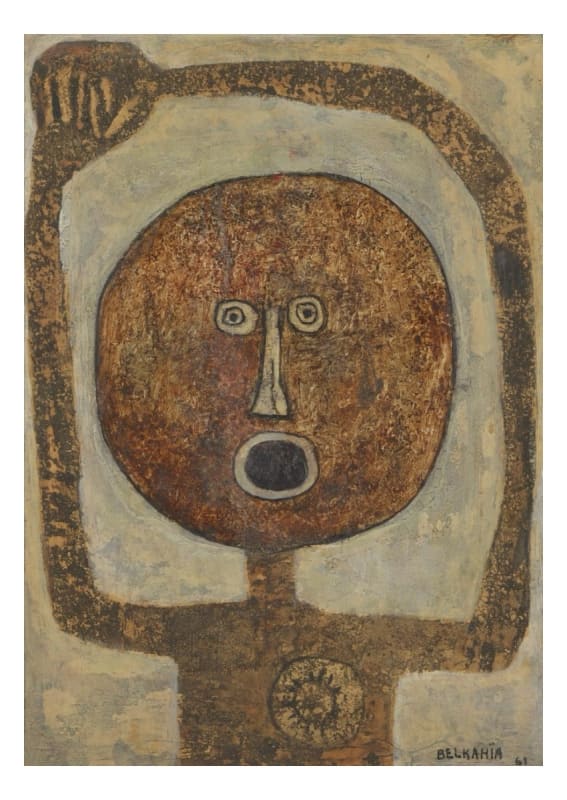In a 1969 photograph by the Moroccan Modernist artist Mohamed Melehi, a market woman in traditional skirts, bearing a heavy sack on her head, is halted in her tracks by an array of dazzlingly colourful abstract paintings on the mud-red walls of Marrakech’s main square, the Djemaa el Fna. At this impromptu outdoor gallery, she is joined by a craning crowd. They are spectators at an experimental exhibition that became a defining moment in Moroccan art after independence in 1956, and is now seen as a landmark of Modernism in the global south.
Melehi, who died of Covid in 2020 aged 83, was a leading figure among the avant-garde artists behind Plastic Presence, which aimed to shift art from the salon to the streets. It continued on Casablanca’s whitewashed walls on the Atlantic coast. All taught in the 1960s at Casablanca’s École des Beaux-Arts, now the focus of an important exhibition at Tate St Ives. The town’s Atlantic setting, and its history as a hub of British Modernism, seem apt for the first museum show of this constellation of Moroccan Modernists: The Casablanca Art School: Platforms and Patterns for a Postcolonial Avant-Garde 1962-1987.
Three disparate artists form the core “Casablanca Trio”, and all have had works acquired by Tate since 2016. Farid Belkahia, the young director of the Casablanca school between 1962 and 1974, who died in 2014, was the subject of a retrospective at the Pompidou Centre in Paris in 2021. He was a student in Paris and Prague, and his early oil paintings include the sombre-toned “Tortures” (1961-62), its figure excruciatingly hung upside-down from shackles, expressing outrage at the French crackdown on neighbouring Algeria’s bid for independence.
While Melehi shared Belkahia’s political sympathies, his contrasting early experiments in abstraction proclaim the heady influence of New York, where he had a Rockefeller scholarship after art studies in Spain and Italy. The acrylic canvas “Minneapolis” (1963), its zones of black and red separated by a yellow strip, paid homage to Barnett Newman’s colour-field painting before his own signature, the protean wave pattern, emerged. Melehi’s memorable solo show New Waves, at London’s Mosaic Rooms in 2019, was by the same curatorial team, Morad Montazami and Madeleine de Colnet, here working with Tate St Ives.
June 11, 2023


